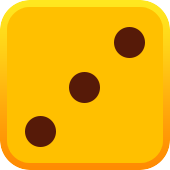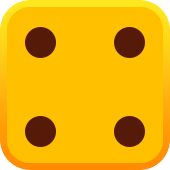












This classic gambling pastime continues to be one of the most cherished around the world, and mastering the techniques to excel at it is easier than many anticipate. This handbook provides clear and thorough guidance for beginners aiming to gain an in-depth knowledge of the game. Whether you want to know how to play blackjack at a casino or prefer trying your luck online, this guide provides the essential tips to get started with confidence.
Understanding the regulations of the game can mark the pivotal distinction between casual play and employing tactics to boost your odds of success. This tutorial will explore the preliminary card distribution, clarify the aim of achieving a total of 21, and outline how to evaluate your choices based on the cards you hold. By adhering to these steps, you'll establish a solid groundwork for engaging in this card game with both skill and heightened satisfaction.
From wagering protocols to a summary of the dealer’s moves, this piece is crafted to guide you through every aspect in a clear, straightforward way. We’ll also provide handy hints for beginners to enhance your strategic thinking and improve your likelihood of success. So, let’s plunge into the world of this timeless card game and uncover how to engage and succeed with regularity.
Before you jump into the game, it’s essential to grasp the fundamental elements that shape this card game. Whether you’re learning how to play blackjack for the first time or brushing up on the basics, this section explains the fundamental components you will encounter while playing.
To start, the pack consists of a standard assortment of 52 cards, each with designated points: numeral cards represent their face value, court cards (Jack, Queen, King) are worth 10, and Aces can be counted as either 1 or 11. Getting to know these point values is crucial for tallying up the total of your hand.
The engagement with table protocols commences by positioning your wager. Wagering practices differ depending on the gambling venue but typically require placing chips in a specific zone. The croupier then manages the preliminary card distribution, dealing two cards to each participant and two to themselves, with one of the dealer’s cards revealed.
|
Element |
Description |
Importance |
|
Card Values |
Number cards = face value; Face cards = 10; Ace = 1 or 11 |
Foundation for hand totals |
|
Betting Procedures |
Placing chips before initial card deal |
Determines your risk and reward |
|
Dealer’s Cards |
Dealer gets two cards, one face up |
Influences your decision-making |
Understanding these basics will prepare you for the upcoming sections where we go deeper into the game flow and decision-making.
The main objective of the game is straightforward yet strategic: outscore the dealer by getting a hand total closer to 21 without exceeding it. The aim of reaching 21 adds both excitement and challenge to the game. Learning how to play casino blackjack involves mastering this balance between risk and reward.
|
Objective |
Description |
Outcome |
|
Goal of Reaching 21 |
Get a hand total equal to or below 21 |
Best possible hand |
|
Beat the Dealer |
Have a higher total than the dealer without busting |
Win the round |
|
Avoid Busting |
Keep hand total ≤ 21 |
Stay in the game |
The game's dynamic nature is due to the dealer's hidden card and how players choose to play their hands. Now that you understand the basics and objectives, let's explore the step-by-step gameplay.
Playing this game involves several organized phases, from placing bets to determining the final outcome. For those wondering how to play blackjack for beginners, mastering each phase is essential for smooth gameplay and confident decision-making. Here’s a detailed breakdown to guide you through the gameplay smoothly and confidently, whether you’re at a land-based casino or playing online.
The round begins with betting procedures and proceeds through the initial card deal process, followed by player decisions and the dealer’s turn. Each phase has specific rules and actions you need to be aware of. Let’s look at these steps in detail:
The first step in a round is to place your wager. Betting procedures require you to put chips in the betting box before any cards are dealt. Bets can vary greatly depending on the table limits and casino rules. Decide how much you want to wager and place your chips clearly in the designated betting area, keeping in mind the table minimums and maximums. Once all bets are placed, the dealer starts dealing the cards. Mastering this initial phase is crucial, as it sets the stage for how to play blackjack and win by ensuring you engage properly with table etiquette and game flow.
The dealer starts the initial card deal process by distributing two cards to each player and themselves. One dealer card is dealt face up, the other face down, called the hole card. Players receive two face-up cards. The dealer’s face-up card plays a crucial role in influencing players’ next moves. The card values are totaled immediately to help players assess their hand strength.
Key points to understand at this stage, which are essential for knowing how to play blackjack well, include:
This phase sets the stage for the rest of the round and determines how you will proceed with your decisions.
Once cards are dealt, you enter the decision-making flow. If you’re learning how to play blackjack card game effectively, it’s important to understand the options available based on your hand and the dealer’s visible card. Here’s a quick overview:
|
Action |
Description |
When to Use |
|
Hit |
Request an additional card |
When hand total is low and risk of bust is acceptable |
|
Stand |
Keep current hand without additional cards |
When hand total is strong or risk of bust is high |
|
Double |
Double your bet, receive one more card, then stand |
When you have a strong hand (usually 9, 10, or 11) |
|
Split |
Divide two identical cards into separate hands |
When dealt pairs, such as two 8s or two Aces |
Choosing the right action requires understanding hand totals and dealer tendencies, which come with experience and strategy.
After all players have made their moves, the dealer reveals the hole card and plays their hand according to casino rules. Understanding how to play blackjack includes knowing the dealer action overview, which is generally fixed:
|
Dealer Hand Total |
Dealer Action |
Resulting Scenario |
|
16 or less |
Dealer must hit |
May bust or improve hand |
|
17 or more |
Dealer must stand |
No further cards drawn |
|
Dealer busts |
Dealer exceeds 21 |
All remaining players win |
The round concludes with the dealer’s hand compared against each player's hand to determine winners and losers.
If you’re learning how to play for beginners, a few tips can make your start more successful.
With patience and practice, you can improve your understanding and enjoy the game more fully.
Familiarity with common game terminology helps you follow the action and communicate effectively with other players and dealers.
|
Term |
Meaning |
Usage Context |
|
Blackjack |
A hand of Ace and 10-value card |
Instant win with best possible hand |
|
Bust |
Hand total exceeds 21 |
Automatic loss |
|
Hole Card |
Dealer’s face-down card |
Revealed during dealer’s turn |
Familiarity with these terms is an important step in understanding blackjack how to play at a casino or online.




